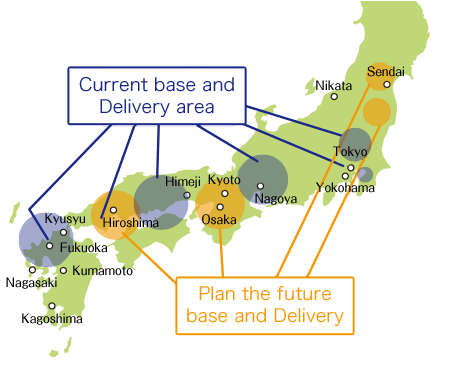Information on JPL Initiative


JPL is a logistics network dedicated to all petrochemical category companies in Japan.
In 2029, Daisei Warehousing & Transportation will connect JPL.
Turning 48 Years of Gratitude into new Challenges
We at Daisei W&T will establish JPL (Japan Polymer Lines) to expand the JUST-BIN system across the whole of Japan that has been fostered by us in the Chubu region, and uniquely meet the needs of the petrochemicals companies in Japan.
Background of petrochemical companies
- 1. Decrease in workforce
Japan entered the phase of declining population in 2011.
Working age population has also declined.
The baby boom generation, which had been at the center of the economy, is retiring from the workforce.
8.06 million people in 1947-49 (aged 67-69), more than 10% of the 65 million people in the workforce, experienced a significant decline.
- 2. Decline in birth rate => Impact on higher education
The number of births in 2015 is 10,05,656 and is showing a declining trend since 1991.
Out of these, the percentage of students advancing to universities is 56.5%.
University graduates will not want to pursue a profession as a driver.
High school graduates are facing a problem with the licensing system
for large and medium sized motor vehicles.
- 3. Aging of drivers
According to the Ministry of Internal Affairs and Communications, the number of drivers was 830,000 in 2017 and has been declining for the past three years.
Truck drivers are dependent on a middle-aged male labor force, with the number of young workers under the age of 40 accounting for about 30% of the total. In addition, the percentage of women is low at 2.5%.
Estimated 720,000 in 2027 compared to 960,000 in 2027 labor force demand. 25% of the demand is insufficient.
Shortage of 240,000 truck drivers in 2027
- 4. Increase in the number of transport operators
Nationwide Total Number – 62,461 operators, Aichi prefecture – 2,965 operators, Ibaraki prefecture – 2,418 operators, Chiba prefecture – 2,440 operators, Fukuoka prefecture – 2,373 operators, Okayama prefecture – 1,264 operators. Vehicle fleet less than 20 cars 76.2%. (Less than 20 employees 72.5%)
Two logistics laws enacted in 1990
“Consigned Freight Forwarding Business Act” and “Motor Truck Transportation Business Act.” => As a result the number of transport company increased.
1. Fixed freight rates to liberalization
2. Business license to notification system
In 1990, there were 39,555 operators => Increased to 62,637 operators
in 2014. An increase of 23,000 operators in 20 years. => This rapid growth continues.
- 5. Logistics measures company
With the increasing popularity of Internet shopping, delivery volumes are showing an increasing trend.
In 2010 there were 3.2 billion packages for delivery => In 2014 these increased to 3.6 billionThe big three together constitute 92.5% of the total business Transporters want to be in the lucrative small-lot operations, but building a nationwide network and maintaining quality is difficult.
Handling of polymers is difficult for courier companies and they do not deliver unless the products are packaged in cardboard boxes.Route operators are also reluctant.
- 6. Workplace Reform and Compliance
Laws related to the reform of work styles will go into effect sequentially on April 1, 2019.Compliance with the upper limit of 45 hours per month and 360 hours per year for overtime work became law.
For “vehicle driving work,” the application of the maximum overtime work limit with penalties will be postponed until the end of March 2024.
Currently, the Labor Standards Act defaults drivers to a 16-hour daily restraint, which will change in 5 years to an 11-hour daily restraint with a limit of 2 hours of overtime per day. Personnel will be required to work 1.5 times.
Unless an independent distribution network is setup for polymers, quality of distribution cannot be maintained.




